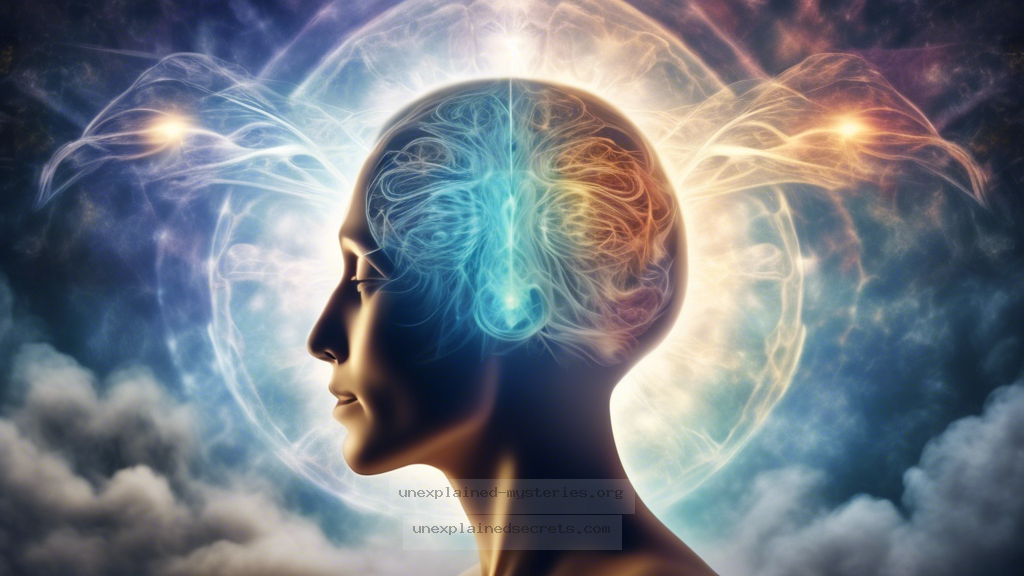What Happens to Consciousness During a Near-Death Experience?
What Happens to Consciousness During a Near-Death Experience?
The phenomenon of near-death experiences (NDEs) has fascinated researchers, spiritual seekers, and the general public for decades. These experiences often involve vivid sensations, feelings of peace, and encounters with deceased individuals, leaving many to ponder the nature of consciousness and what happens after death. This question is not just a scientific inquiry; it touches on profound spiritual and philosophical implications. Understanding NDEs could alter our views on life, death, and the continuity of consciousness.
Historical Context of Near-Death Experiences
Accounts of near-death experiences date back thousands of years. Historical texts, including the “Epic of Gilgamesh,” describe moments of individuals confronting death and returning with insights. In the modern era, NDEs gained significant attention in the late 20th century following Dr. Raymond Moody’s 1975 book, “Life After Life,” which presented numerous case studies. Moody categorized common elements of NDEs, such as the sensation of leaving the body, experiencing a tunnel, and encountering a bright light. This body of work laid the groundwork for further exploration into the phenomenon.
Since then, NDE research has evolved, with numerous studies conducted to investigate the consistency of these experiences across cultures and religions. Some of the first scientific studies were conducted by Dr. Elisabeth Kübler-Ross, who examined the psychological aspects of death and dying. Researchers like Dr. Pim van Lommel have also contributed significantly, conducting studies that suggest NDEs may challenge conventional understandings of consciousness and awareness.
Core Concepts of Near-Death Experiences
NDEs typically include several common components, which can vary in intensity and experience. According to various studies, the following elements are often reported:
- Out-of-Body Experience (OBE): Many individuals report a sensation of floating outside their bodies, observing the medical procedures being performed on them.
- Life Review: Some individuals experience a rapid review of their life, often feeling an emotional connection to their past actions.
- Encountering Beings of Light: Many report meeting deceased relatives or spiritual beings, often described as enveloping them in unconditional love.
- Feeling of Peace: A profound sense of tranquility and detachment from physical pain is commonly reported.
- Tunnel Experience: A common visual aspect where individuals perceive traveling through a dark tunnel towards a bright light.
These core components form the basis of many NDE reports, suggesting a shared psychological or spiritual experience. The variety of experiences, however, raises questions about the nature of consciousness during clinical death.
Scientific Research into NDEs
Scientific investigation into NDEs has yielded mixed results, often intersecting with philosophical and spiritual discussions. Research has primarily focused on understanding the neurobiological processes that might explain these phenomena. Some scientists propose that NDEs may be a result of brain activity during traumatic events, such as a lack of oxygen (hypoxia) leading to hallucinations or altered states of consciousness.
However, studies, such as those by Dr. Pim van Lommel, argue that NDEs cannot be solely attributed to physiological responses. His research included a prospective study of cardiac arrest patients, where 18% reported NDEs, with some describing accurate observations of events during their clinical death. These findings challenge the purely materialistic interpretation of consciousness and suggest that subjective experiences may exist independently of brain function.
Research indicates that NDEs may provide evidence for consciousness existing beyond the physical brain, raising profound questions about the nature of reality and existence. 💡
Practical Implications of NDE Research
The implications of NDE research extend beyond academic curiosity. Understanding these experiences can have significant effects on how individuals approach death and dying, both personally and within the context of healthcare. For instance, patients who have had NDEs often report a decrease in the fear of death and an increased appreciation for life. This can lead to a more compassionate approach to end-of-life care, emphasizing comfort and emotional support.
Healthcare professionals are increasingly encouraged to consider the psychological and spiritual dimensions of patient care, particularly for those facing terminal illnesses. Training in handling discussions about death and the potential for NDEs can provide better support for patients and their families during these challenging times.
Alternative Perspectives on NDEs
While many researchers advocate for a scientific understanding of NDEs, alternative perspectives exist. Some spiritual traditions view NDEs as evidence of an afterlife, where the soul continues to exist beyond the physical body. This perspective is particularly prevalent in religions that emphasize reincarnation or the eternal nature of the soul.
Furthermore, some skeptics argue that NDEs can be entirely explained by brain chemistry and psychological factors, dismissing spiritual interpretations as illusions. This dichotomy between scientific and spiritual perspectives highlights the ongoing debate surrounding consciousness and existence beyond death.
Common Misconceptions about Near-Death Experiences
Several misconceptions about NDEs can lead to misunderstandings about their nature and implications:
- All NDEs are the same: While there are common elements, individual experiences can vary significantly based on cultural, personal, and psychological factors.
- NDEs are purely physiological: While brain activity during near-death situations may contribute to these experiences, many NDErs report elements that challenge purely biological explanations.
- NDEs confirm a specific religious view: NDEs are reported across diverse cultural and religious backgrounds, suggesting a more universal aspect to these experiences.
It’s essential to approach NDEs with an open mind, recognizing the variety of interpretations and experiences that individuals may have. ⚠️
Best Practices for Investigating NDEs
For those interested in exploring NDEs further, several best practices can be useful:
- Study a variety of cases: Look into diverse accounts of NDEs across different cultures and backgrounds to understand the range of experiences.
- Engage with both scientific and spiritual literature: This dual approach can provide a more nuanced understanding of the phenomenon.
- Conduct interviews: Speaking with individuals who have experienced NDEs can yield valuable insights and personal stories.
- Participate in conferences or workshops: Engaging with experts in the field can enhance knowledge and understanding of ongoing research.
Future Developments in NDE Research
The future of NDE research is promising, with advances in neuroscience and psychology paving the way for deeper exploration. New technologies, such as brain imaging, may allow researchers to study the brain’s activity during near-death situations in real-time. Furthermore, interdisciplinary collaborations between scientists, psychologists, and spiritual leaders could lead to a more comprehensive understanding of consciousness.
As public interest in the topic continues to grow, more funding may become available for research into NDEs, potentially leading to groundbreaking discoveries about the nature of consciousness and existence beyond physical life.
Conclusion: The Enigma of Consciousness and NDEs
The mystery of what happens to consciousness during a near-death experience remains one of the most compelling questions in both science and spirituality. As research continues to evolve, it challenges traditional views of life, death, and consciousness. The insights gained from studying NDEs offer profound implications for how we understand our existence and the possibilities that may lie beyond our physical reality.
Engaging with this enigma encourages a broader perspective on life and death, prompting us to consider the intricacies of consciousness and the potential for experiences that transcend our current understanding. As we navigate this complex terrain, one thing remains clear: the exploration of NDEs is not just a scientific endeavor but a deeply human quest for meaning and connection. ✅
Other Articles
Recent Posts
- What Happened to Flight MH370? The Conspiracy Theories That Still Haunt Us
- What Secrets Lurk Within the Walls of the Infamous Trans-Allegheny Lunatic Asylum?
- What Evidence Supports the Existence of Bigfoot in the Pacific Northwest?
- What Happened to the Indus Valley Civilization? Unraveling the Mysteries of Ancient Urban Life
- Can Telepathy Be Scientifically Proven Through Laboratory Evidence?







